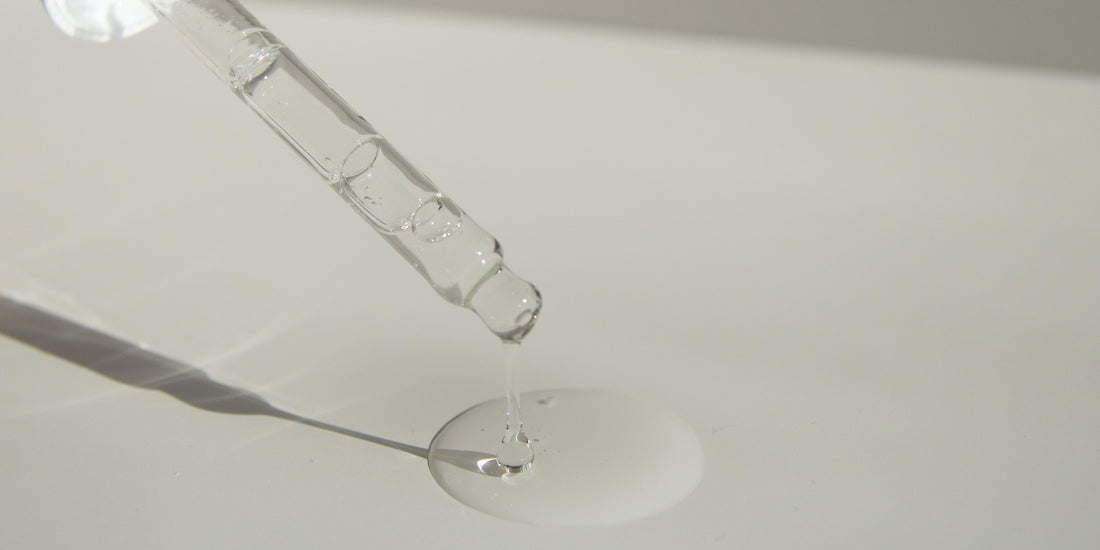
Dos and Don'ts of Hyaluronic Acid
Share
If you're someone who's interested in skincare, you've probably come across hyaluronic acid as an ingredient in many skincare products. Hyaluronic acid also known as HA, is a naturally occurring substance in the body that helps to keep skin hydrated and plump. In recent years, it has become a popular ingredient in skincare products due to its ability to provide intense hydration and anti-ageing benefits. In this blog post, we will discuss why you should incorporate hyaluronic acid into your skincare routine, how and when to use it and when to avoid using it.
How to Use Hyaluronic Acid Correctly
One of the best things about hyaluronic acid is that it is suitable for all skin types. Whether you have dry, oily, or sensitive skin, hyaluronic acid can provide hydration and anti-ageing benefits without causing irritation. Additionally, hyaluronic acid is non-comedogenic, meaning it won't clog pores, making it an excellent choice for those with acne-prone skin. Below are some top tips on how to use hyaluronic acid effectively in your skincare routine.
Do Use It Daily
Hyaluronic Acid can be used morning and evening in your routine, especially for those who suffer with extremely dry or dehydrated skin. Those with oily skin may find it best to only incorporate into their routines once a day or a few times a week depending on how their skin feels.
Do apply to damp skin
Hyaluronic acid is a humectant, which means it attracts water and helps to keep it in the skin. It can hold up to 1000 times its weight in water, making it an excellent ingredient for providing hydration to the skin. When your skin is properly hydrated, it appears plump and supple, which can help to reduce the appearance of fine lines and wrinkles. The best time to apply hyaluronic acid is to apply to skin when it’s damp, straight after a shower or after applying your toner are both great times to apply for maximum benefit.
Do moisturise after applying HA
Once you have applied your hyaluronic acid product, it is crucial to lock in the hydration with a moisturiser. Applying HA and not adding a layer of moisture on top can be detrimental to the skin as it can pull hydration from lower layers which will dehydrate skin further. If applying HA as part of your routine, always apply to damp skin and lock in with a moisturiser for optimum hydration.
Do layer HA with other products
Hyaluronic acid is a versatile ingredient that can be found in a variety of skincare products, including serums, moisturisers, and masks. This means that you can easily incorporate it into your existing skincare routine without having to make any major changes.
Do use if your concerned with anti-ageing
As we age, our skin loses moisture and elasticity, which can result in the appearance of fine lines and wrinkles. Hyaluronic acid can help to counteract these effects by providing intense hydration to the skin, which can help to improve the appearance of fine lines and wrinkles. Additionally, hyaluronic acid can help to stimulate collagen production in the skin, which can help to improve skin elasticity and firmness.
Do use for an even and hydrated complexion
When your skin is properly hydrated, it appears smoother and more even in texture and tone. Hyaluronic acid can help to improve the overall appearance of your skin by providing intense hydration and improving skin elasticity and firmness. This can result in a brighter, more youthful-looking complexion.
Do use Hyaluronic Acid with other ingredients and products like
Hyaluronic acid is an excellent addition to any skincare routine and it works even better when used alongside other skincare products. In this blog post, we will explore some of the best products to use alongside hyaluronic acid for a truly hydrated and healthy complexion.
Retinol
Retinol is a form of vitamin A that helps to improve skin texture and reduce the appearance of fine lines and wrinkles. However, retinol can be drying, which is why it's important to use it alongside hyaluronic acid. The hyaluronic acid will help to keep the skin hydrated and prevent any dryness or irritation that may occur with retinol use. Try our Overnight Retinol Powerbalm, the perfect retinol product to wake up with glowing skin.
Vitamin C
Vitamin C is an antioxidant that helps to brighten and even out skin tone. When used alongside hyaluronic acid, vitamin C can help to boost collagen production, which helps to keep the skin firm and plump. Look for a vitamin C serum or moisturiser that also contains hyaluronic acid for an extra dose of hydration.
Moisturiser
A moisturiser is essential to lock in the hydration provided by hyaluronic acid. A moisturiser helps to form a barrier on the skin's surface, preventing moisture loss and keeping the skin hydrated throughout the day. Look for a moisturiser that contains ingredients such as ceramides, glycerin, or squalane, which work together with hyaluronic acid to provide long-lasting hydration.
Facial Oil
Facial oils are a great way to provide additional hydration to the skin. Look for a facial oil that contains ingredients such as jojoba oil, argan oil, or rosehip oil, which are all non-comedogenic and won't clog pores. Apply a few drops of facial oil after using hyaluronic acid to help seal in the hydration and provide a healthy glow to the skin.
SPF
Sun damage can cause premature ageing, hyperpigmentation, and even skin cancer. Using a broad-spectrum sunscreen with SPF 30 or higher is essential to protect the skin from the damaging effects of the sun. Look for a sunscreen that contains hyaluronic acid and is also moisturising for an added boost of hydration.
Exfoliator
Due to containing the word Acid in its name, Hyaluronic Acid is often confused with being an acid that exfoliates the skin. Hyaluronic Acid isn’t an exfoliating ingredient and so is a great addition to your skincare routine after exfoliating skin to give skin an added boost of hydration.
Things to Avoid With Hyaluronic Acid
Don’t overuse Hyaluronic Acid
While hyaluronic acid is a great hydrator, overusing it can lead to dehydrated skin. This happens because hyaluronic acid can only attract and retain a limited amount of moisture, and using too much can cause it to pull moisture from deeper layers of the skin. It's recommended to use hyaluronic acid once or twice a day, depending on your skin type.
Don’t use Hyaluronic Acid on dry skin - always apply to damp skin
Hyaluronic acid works by attracting and retaining water in the skin. If you apply it to dry rather than damp skin, it may draw moisture from deeper layers of the skin instead of from the air, leaving your skin drier than before. Therefore, it's crucial to apply hyaluronic acid on damp or slightly moist skin, so it can effectively pull in moisture from the air and surrounding environment.
Don’t wait for HA to dry before applying moisturiser
Hyaluronic Acid feeds off moisture so the best way to use it is applied to damp skin and applying your other products and moisturiser on top before it dries to ensure optimum hydration is being fed to the skin.
Hyaluronic acid is an excellent ingredient to incorporate into your skincare routine. Its ability to provide intense hydration and anti-ageing benefits, as well as its suitability for all skin types, make it a must-have for anyone interested in maintaining healthy, youthful-looking skin. Whether you choose to use a hyaluronic acid serum, moisturiser, or mask, your skin will thank you for the added hydration and anti-aging benefits.
Looking for a powerful Hyaluronic Acid Serum? Add the SKINICIAN Hyaluronic Elixir to your skincare routine for hydrated, plump skin:
For more on Hyaluronic Acid read:

